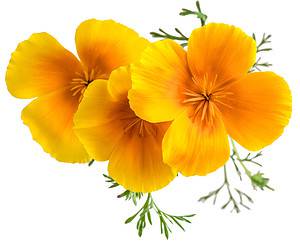Gardening in the Northeast can be a challenge. Winters are cold, and summers are hot — but it’s the humidity that gets you! These conditions make it difficult to find the right rose cultivars to come back year after year. In this article, we’ll dive into the key considerations when choosing rose cultivars for this environment and ten hardy roses in Connecticut gardens.
Let’s dig in!
Top Considerations for Roses in Connecticut
Connecticut covers USDA zones 5-7, which fits most rose varieties growing needs. However, not all roses thrive in this environment.
Many gardeners report two overarching issues with roses in Connecticut: overwintering and disease prevention.
The temperature rarely rises above freezing during the winter, with an average low of 19.9° F (-6.7° C) and an average high of 36.9° F (2.7° C). So, finding cold hardy roses is essential for Connecticut. Mulching and deadheading can help offset the cold’s effects.
On the other hand, summer humidity also poses challenges for aspiring rose gardeners. Roses are prone to a disease called black spot, which thrives in warm, moist environments. Choosing disease-resistant cultivars is essential for success in Connecticut gardening. Allowing for plenty of space and being vigilant with pruning and removal will also help.
The Best Roses in Connecticut
Fortunately, there are several cold-hardy and disease-resistant rose varieties for this unique Northeastern environment. Here are 10 of the best roses in Connecticut.
1. Rosa ‘Knock Out’
Knock Out® Roses are a special shrub rose cultivar developed in the 1980s. Breeder William Radler introduced this cultivar in the 1980s to survive Wisconsin’s cold winters and humid summers.
Rosa ‘Knock Out’ has several sub-cultivars in shades of yellow, pink, red, and white. These roses are allegedly immune to black spots and don’t require deadheading or additional maintenance.
While the Knock Out® Roses are cold-hardy and not as susceptible to humidity as other varieties, they are prone to a virus called Rose Rosette Disease (RRD). This disease causes deformations and growth problems.
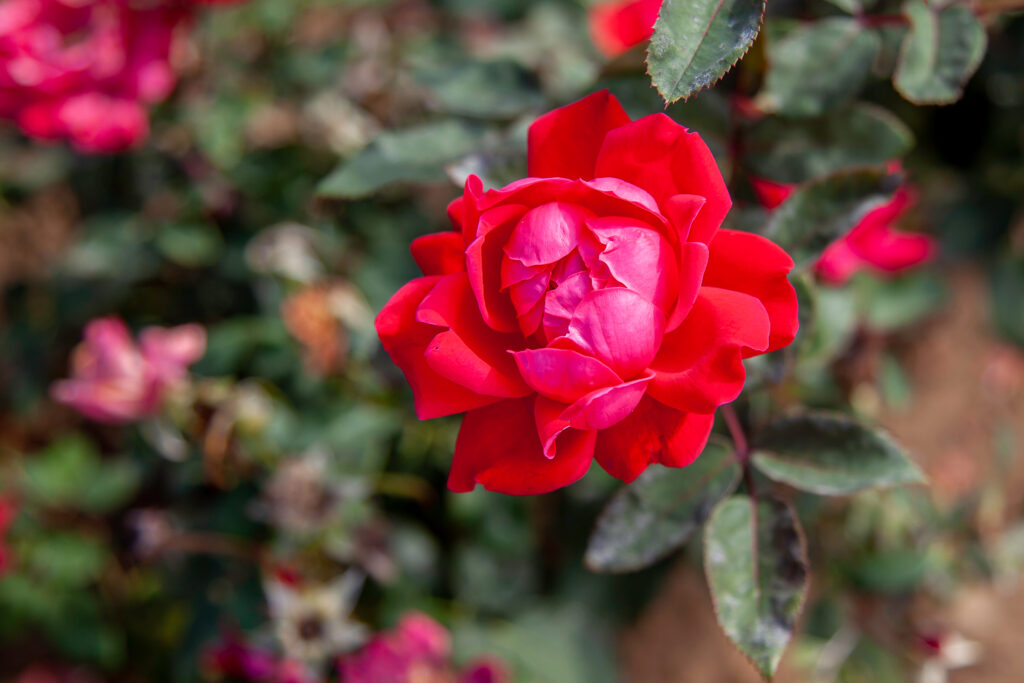
Double knockout roses have some of the most sought-after blooms on the market today.
©JHVEPhoto/Shutterstock.com
2. Rosa ‘William Baffin’
William Baffin was an explorer known for discovering the Baffin Bay between Greenland and Canada. This Northern rose was cultivated to withstand the harsh Canadian winters and summer humidity.
This shrub rose has vibrant pink semi-double blooms with eye-catching white and yellow centers. It looks lovely when planted along a gazebo or trellis, as its heavy vines require ample support to thrive.
Rosa ‘William Baffin’ is also resistant to black spot disease, making it an ideal rose for Connecticut.
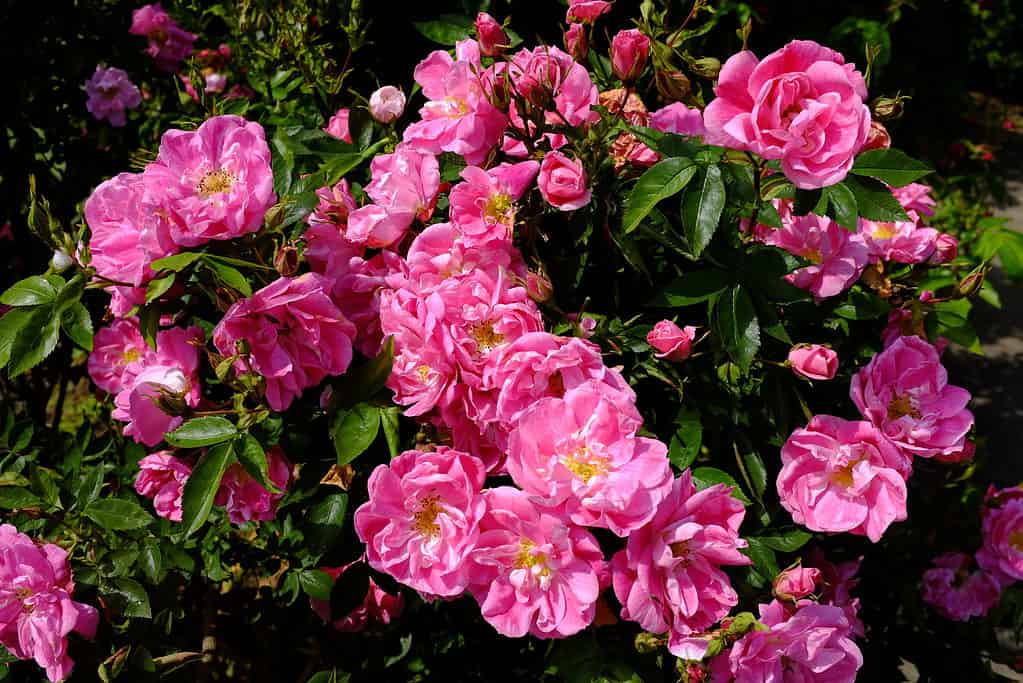
The William Baffin rose is named after a famous explorer.
©Gerry Burrows/Shutterstock.com
3. Rosa ‘Winchester Cathedral’
English roses are world-renowned for their disease resistance and lovely, full blooms. Rosa ‘Winchester Cathedral’ is a lush, white David Austin rose with strong disease resistance.
Many Northeastern gardeners report Rosa ‘Winchester Cathedral’ as being surprisingly cold-hardy and withstanding harsh winters. This lovely flower has a subtle pink blush and soft fragrance, making it elegant and welcoming in any garden.
Help overwinter this rose by cutting back the canes after the growing season and mulching the roots. Consider adding burlap if extreme weather is forecasted.
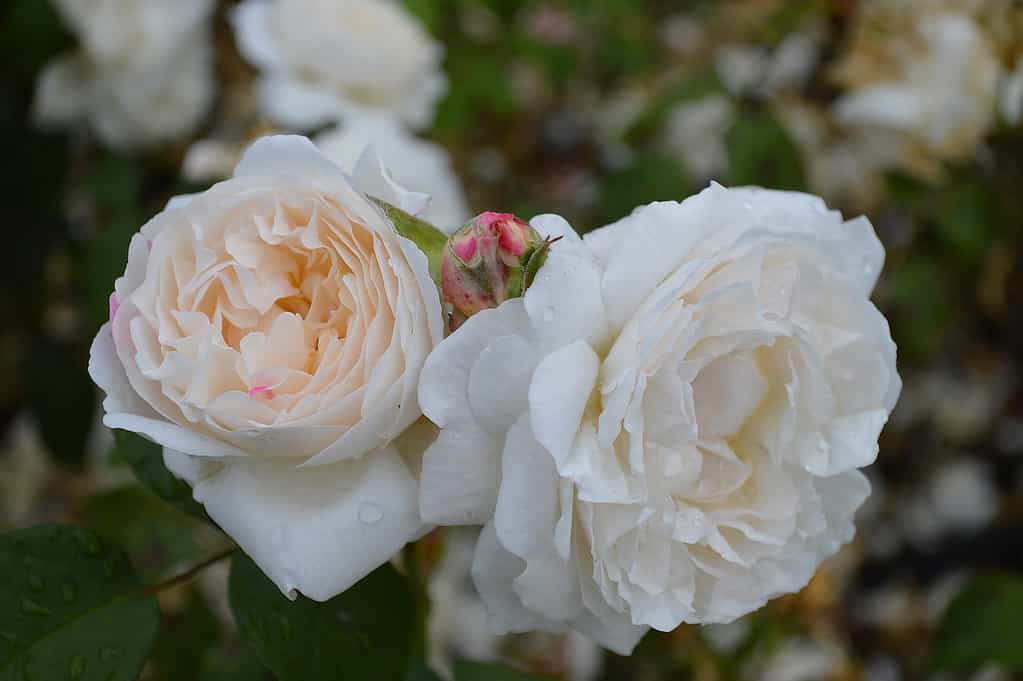
Winchester Cathedral Roses have stunning double blooms.
©Joe Kuis/Shutterstock.com
4. Rosa ‘The Fairy’
Rosa ‘The Fairy’ is a petite shrub rose, classified as a miniature or dwarf variety. Don’t let its delicate appearance fool you. Rosa ‘The Fairy’ is a Polyantha rose, which is considered the hardiest variety.
This award-winning rose is a popular variety among gardeners in North America and Europe. A low grower, The Fairy has soft double blooms in a shade of muted bubblegum pink. It grows in thick clusters and provides ample coverage as a natural spreader.
Unlike most rose varieties, The Fairy also grows well in shady environments.
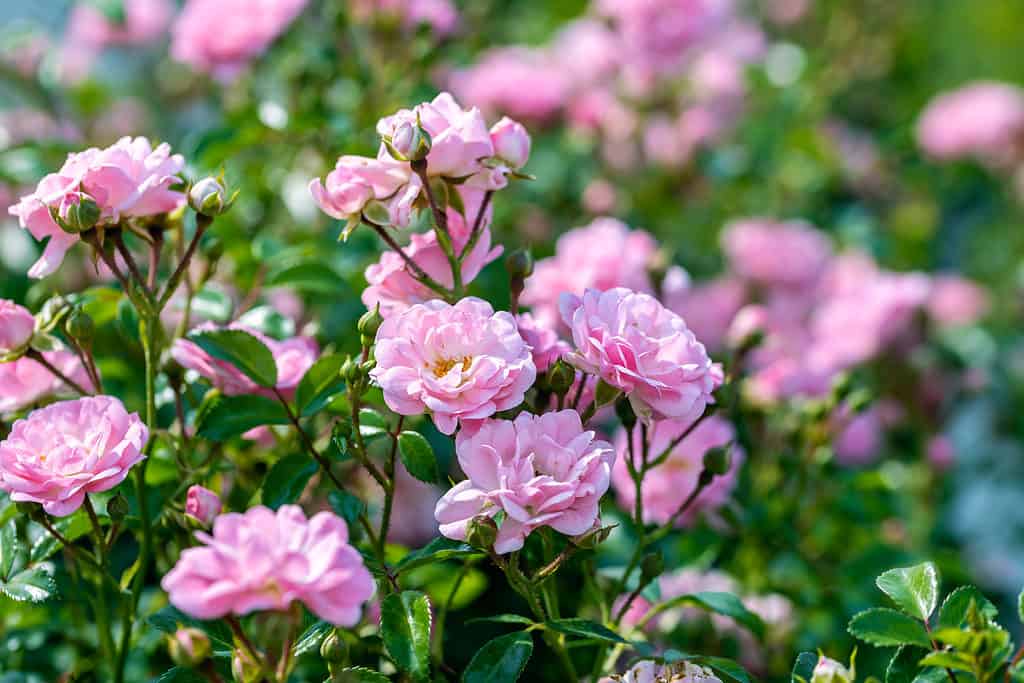
The Fairy rose is small but tough.
©Fabrizio Guarisco/Shutterstock.com
5. Rosa ‘Polestar’
Rosa ‘Polestar,’ also known as Polstjärnan, was cultivated in Finland in the 1930s. This climbing rose is a natural spreader, with delicate white double blooms and a vibrant yellow center.
Horticulturists bred The Polestar to survive the harsh Finland winters and bloom in the limited weeks of summer sunlight. Its natural disease resistance and unbeatable cold hardiness make it ideal for Connecticut.
This traveling rose provides great ground cover but will spread up to 20 feet if left unchecked. Cut back regularly to provide ample airflow during humid periods and to protect your other flowers.

Polestar roses were cultivated to survive winters in Finland.
©Hivaka/Shutterstock.com
5. Rosa rugosa ‘Yankee Lady’
Rugosa roses are also known as beach roses. This hardy species tends to grow along the shores in Southern Asia. Rugosa roses have five petals and an alluring fragrance.
Rosa rugosa ‘Yankee Lady’ is a cultivar that has special appeal to the Northeast. This shrub rose is col,d hardy, disease-resistant, and no stranger to humid environments. The petals range from soft pink to deep fushia, depending on the soil acidity.
Rosa rugosa is considered invasive in Connecticut and other states. Experts advise purchasing bred cultivars like Yankee Lady rather than transplanting wild roses from coastal areas. Be sure to check with your local natural resources department before planting.
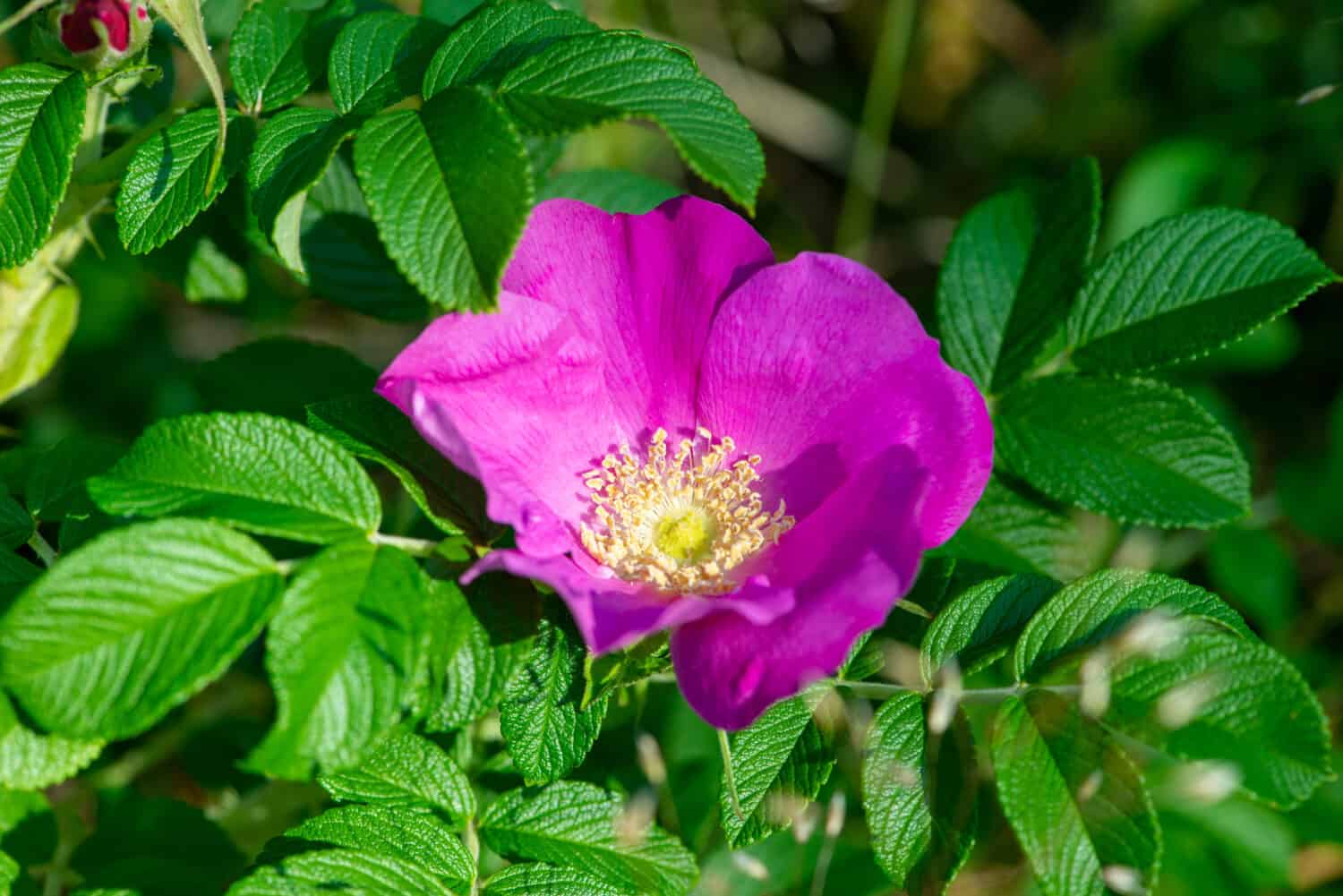
Rugosa roses thrive in coastal areas.
©Ausra Barysiene/Shutterstock.com
6. Rosa ‘Apple Blossom’
Rosa ‘Apple Blossom’ is a stunning groundcover rose with lush clusters of alternating white and pink blossoms. Its unique appearance with separate blooming colors makes it a wonder of nature, and its resemblance to apple blossoms is remarkable.
Apple Blossom is known for its disease resistance and naturalization, even in cold environments. While this traveling rose prefers full sunlight, it can tolerate partial shade—especially if some parts of the plants get full sun exposure.
Rosa ‘Apple Blossom’ is low maintenance but should be cut back every few years to control its spreading habits.
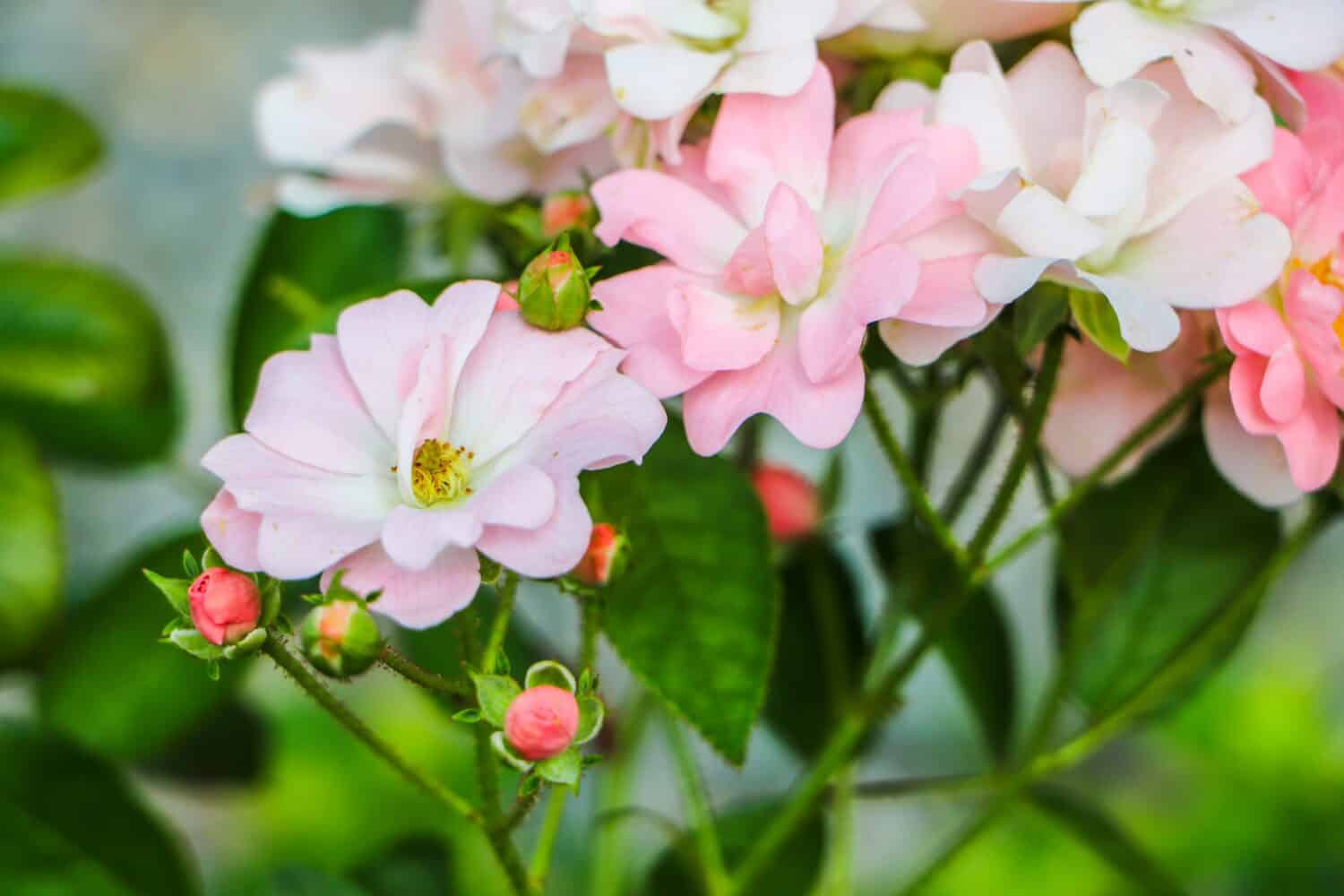
Apple Blossom roses are named for their resemblance to apple tree blooms.
©ATTOMY/Shutterstock.com
7. Rosa ‘Thérèse Bugnet’
Thérèse Bugnet is a Rosa rugosa hybrid that combines all the best features of Rugosa roses and English roses. Its compact, lush pink petals are reminiscent of a carnation, with frilled edges that add texture and dimension.
Rosa ‘Thérèse Bugnet’ is cold hardy, and disease resistant, making it one of the best roses for Connecticut. The strong fragrance and dense growth make this rose perfect for privacy and ambiance around a balcony or patio during the summer months.
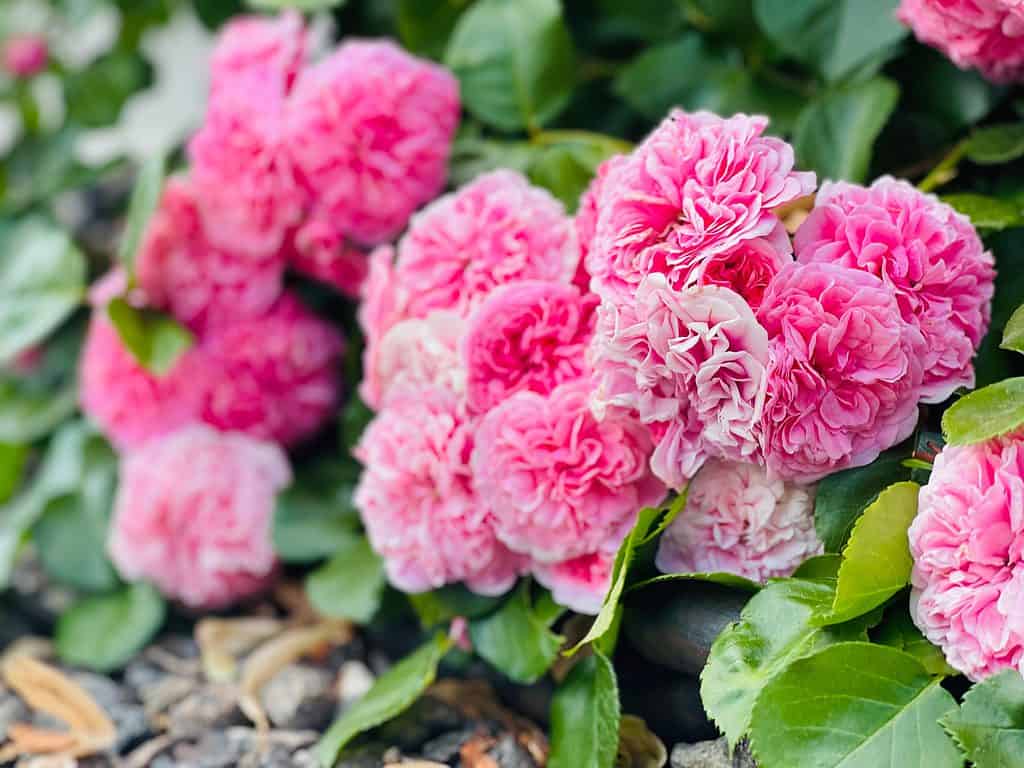
‘Thérèse Bugnet’ is full and clustered.
©Olga Ganovicheva/Shutterstock.com
8. Rosa ‘Quietness’
Rosa ‘Quietness’ is another cold hardy, and disease-resistant shrub rose. Unlike most shrub roses, this gorgeous bloom looks more like a long-stem or Hybrid Tea rose.
The soft pink petals of the Quietness rose deepen into a bolder pink as they furl toward the center. The bold blooms can grow as much as 4 inches wide, making them ideal for cut flower arrangements.
If you’re looking for a low-maintenance alternative to long-stem rose cultivars, Rosa ‘Quietness’ is the perfect choice.
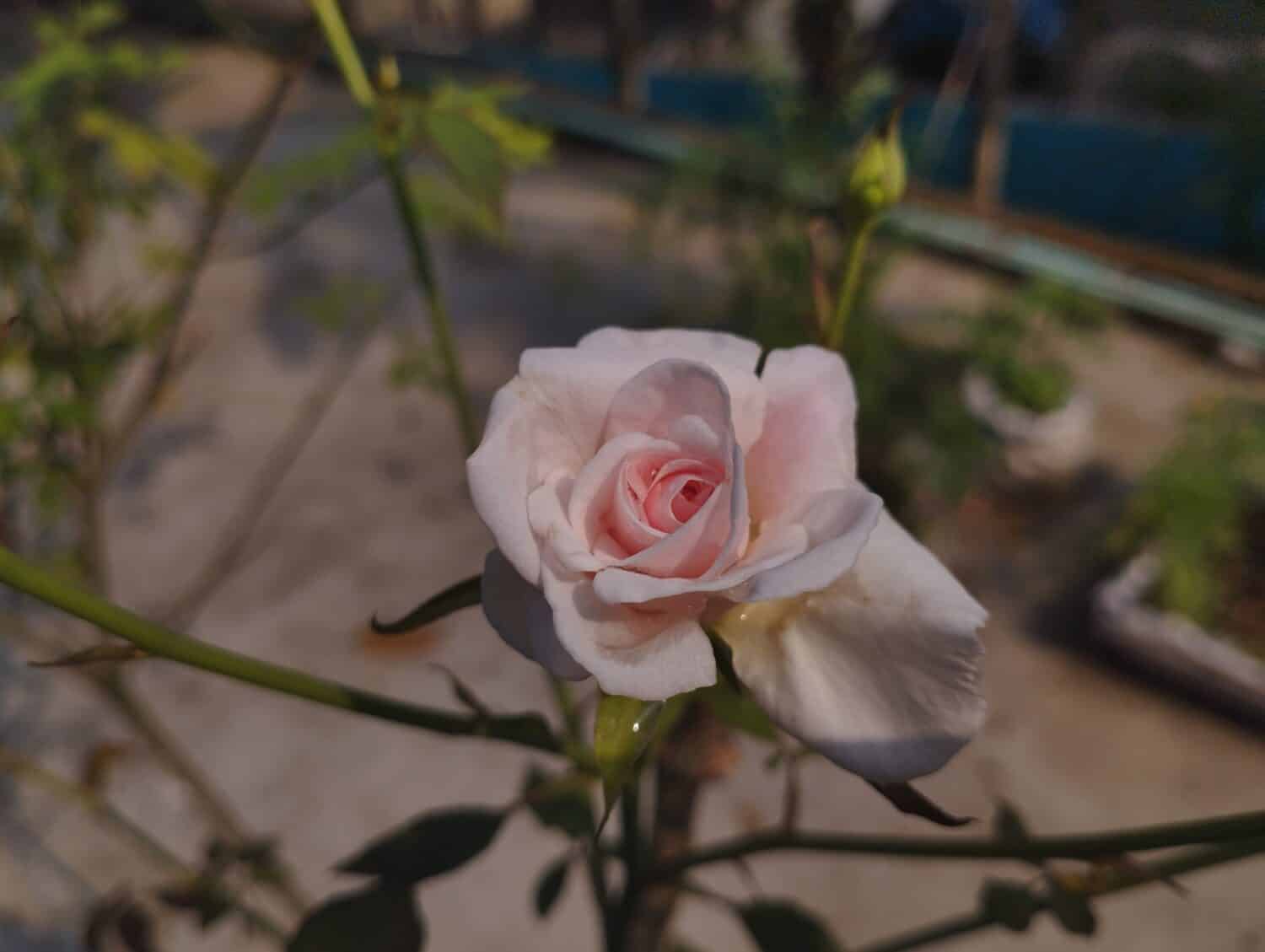
The Quietness rose resembles a long-stem rose.
©Shamim Ahmad _4/Shutterstock.com
9. Rosa ‘Simon Fraser’
Simon Fraser was a Canadian explorer known for discovering the Fraser River and charting a significant part of British Columbia. This tenacious shrub rose was named for its ability to thrive in the Canadian wilderness.
Cold-hardy and disease-resistant, Rosa ‘Simon Fraser’ has delicate pink petals in a bold, vibrant shade. This climbing rose is naturally a low-grower and will spread if unable to climb a trellis or fence.
Many gardeners use this hardy cultivar as ground cover. Trim back every few years to prevent Rosa ‘Simon Fraser’ from exploring and taking over your yard.

Rosa ‘Simon Fraser’ likes to climb and explore.
©nnattalli/Shutterstock.com
10. Rosa ‘Carefree Beauty’
As the name suggests, Rosa ‘Carefree Beauty’ was designed to be low-maintenance. Horticulturist and professor Griffith Buck cultivated Carefree Beauty, sometimes called the Carefree Wonder, at the University of Iowa. This showy bloom is designed to survive cold winters and resist diseases.
Rosa ‘Carefree Beauty’ has a lovely spread with full, lush pink petals. It’s a great addition to a pollinator garden and thrives in full sunlight. Many gardeners use this dense shrub rose as a hedge.
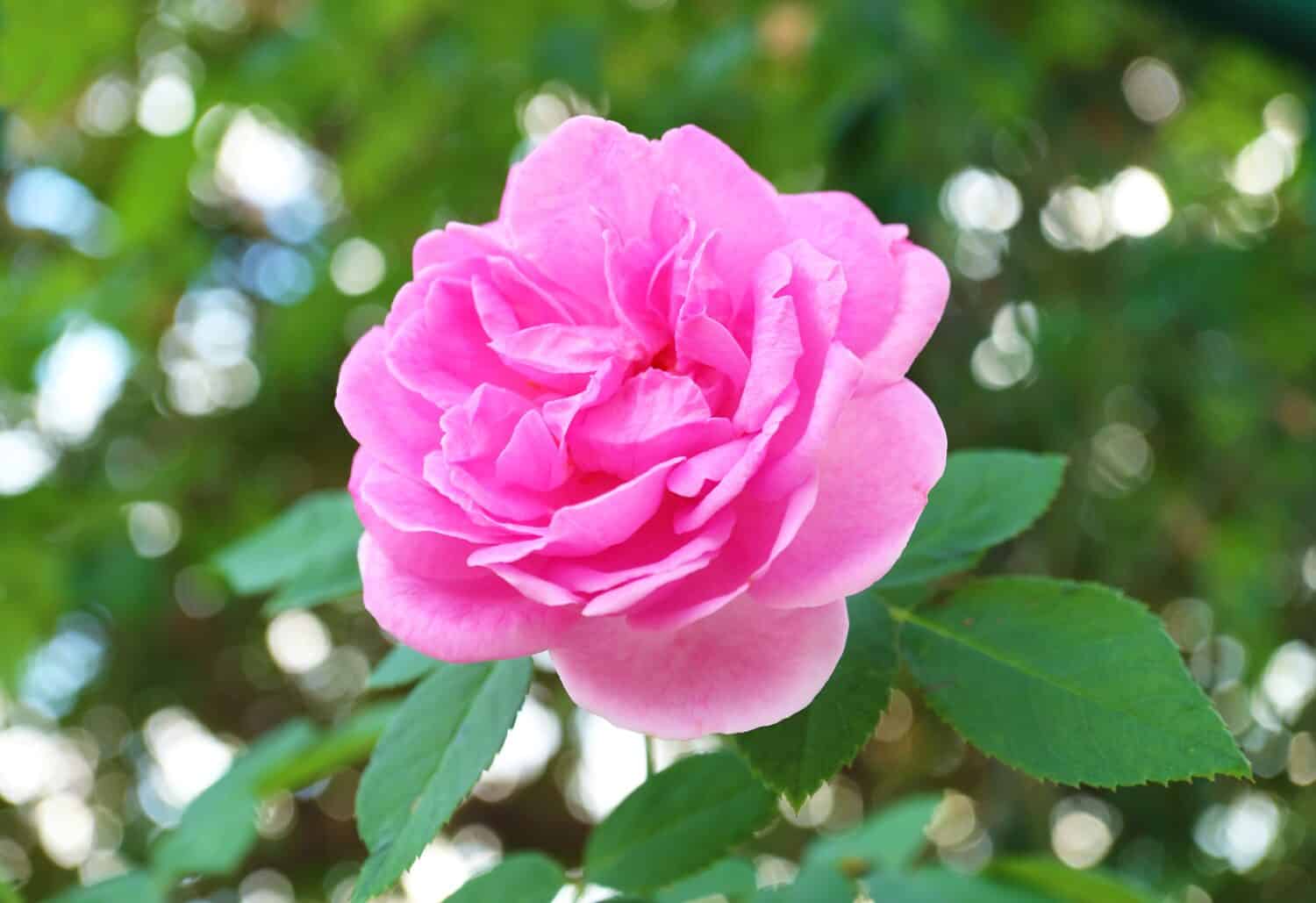
Griffith Buck designed The Carefree Beauty to thrive in the Midwest.
©lovelypeace/Shutterstock.com
Tips for Keeping Roses in Connecticut
Choosing cold hardy, disease-resistant roses is essential for survival in Connecticut. However, there are other steps you can take to improve their chances of survival:
- Space your roses to allow plenty of air circulation
- Be vigilant in monitoring for black spots and cutting back impacted leaves
- Use rich, loamy soil with plenty of organic content
- Water regularly at the base of the plant, rather than from overhead
- Mulch the roots for the dormant season
- Consider wrapping crowns in burlap if extremely low temperatures are in the winter forecast
With these simple tips, you can give your roses what they need to thrive.
Thank you for reading! Have some feedback for us? Contact the AZ Animals editorial team.






